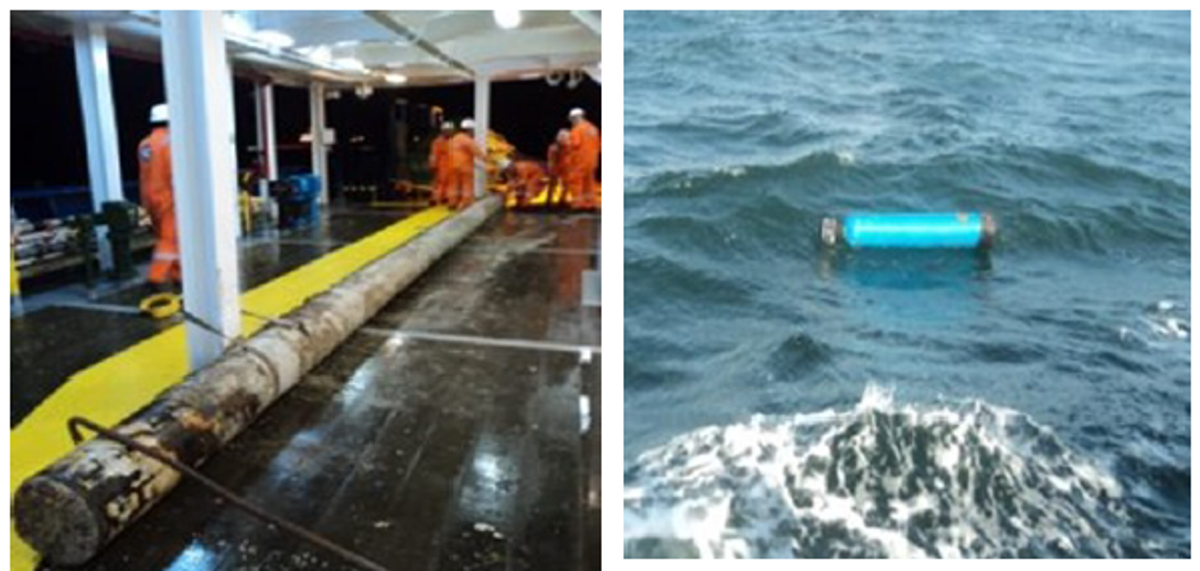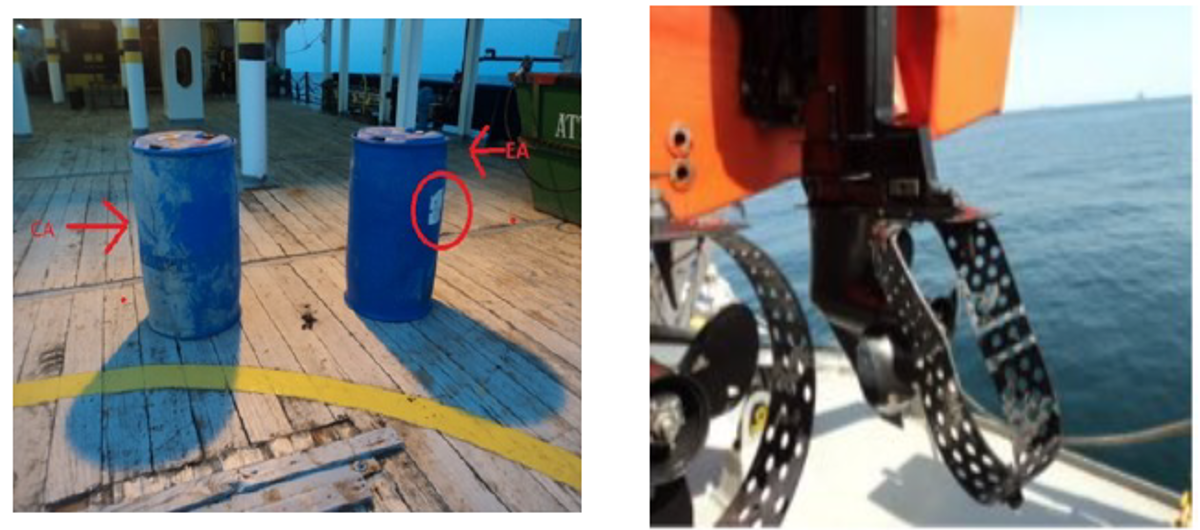Unknown floating objects in 500m safety zone
- Safety Flash
- Published on 17 December 2019
- Generated on 17 December 2025
- IMCA SF 30/19
- 1 minute read
Jump to:
Several unknown floating objects were identified in the 500m safety zone of an installation.
What happened?
Our Members’ vessel was requested to remove / tow these objects out of the safety zone to protect the installation. While doing so, the propeller of a fast rescue craft was damaged.


What went wrong?
Unknown floating objects in the water creating a potential hazard for damage to vessels and small boats at work, or offer a potential hazard to the installation.
What actions were taken?
- The potential risks associated with unidentified objects at sea, whether floating or on the seabed, should be properly and thoroughly assessed, particularly when retrieval, towing and handling, or other intervention, is indicated.
- This risk assessment should include whether or not such objects are hazardous by nature and to what extent they could harm crew or assets.
- This risk assessment should include whether or not such objects are hazardous by nature and to what extent they could harm crew or assets.
- Any potentially hazardous objects should be reported to relevant emergency response services to be dealt with.
- Relevant agreements should be in place and well known by crew members and to be followed.
- Relevant agreements should be in place and well known by crew members and to be followed.
- Vessel crew and small boat/workboat crew should be vigilant and monitor any floating objects in water.
Featured Safety Flashes
-
IMCA SF 23/18
2 October 2018
-
-
IMCA SF 03/05
1 March 2005
IMCA Safety Flashes summarise key safety matters and incidents, allowing lessons to be more easily learnt for the benefit of the entire offshore industry.
The effectiveness of the IMCA Safety Flash system depends on the industry sharing information and so avoiding repeat incidents. Incidents are classified according to IOGP's Life Saving Rules.
All information is anonymised or sanitised, as appropriate, and warnings for graphic content included where possible.
IMCA makes every effort to ensure both the accuracy and reliability of the information shared, but is not be liable for any guidance and/or recommendation and/or statement herein contained.
The information contained in this document does not fulfil or replace any individual's or Member's legal, regulatory or other duties or obligations in respect of their operations. Individuals and Members remain solely responsible for the safe, lawful and proper conduct of their operations.
Share your safety incidents with IMCA online. Sign-up to receive Safety Flashes straight to your email.